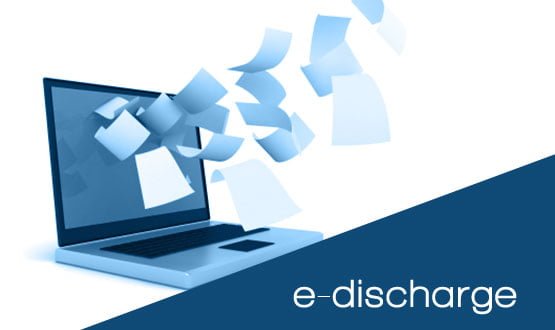The October target for all providers to send discharge letters electronically is not being monitored nationally, but has focused attention on the need to make the process paperless, supporters have argued.
NHS England head of enterprise architecture, Inderjit Singh, told Digital Health News in July that NHS providers must send discharge summaries to GPs electronically by October this year.
The requirement is part of the NHS standard contract, but no figures are available on how many trusts are complying. The ultimate aim is for structured, coded discharge summaries, with agreed clinical headings, to be distributed electronically within two years.
Singh said more recently: “The main point to keep in mind is the end goal of being able to share structured, coded discharge summaries, aligned with agreed clinical headings, which we know will lead to improved patient safety and experience.
“The initial focus on completing discharges electronically for acute or day care patients transferring from hospital to the care of their GP is the first step on this journey.”
Questions about e-messaging are included in the new digital maturity assessment, sent by NHS England to all providers this month. Due to be published in March, the ‘digital maturity index’ will give the first indication of whether the e-discharge target is being achieved.
Dr Munish Jokhani, HSCIC acting clinical engagement lead for transfer of care, said the target has acted as a trigger for trusts to start thinking about e-discharge and has exposed issues around current workflows.
Trusts are using several different methods for sending discharges, including email and fax, and the HSCIC would like to move them towards sending discharges using the ‘clinical document architecture’ standard.
The HSCIC has set a strategic roadmap for trusts starting with e-messaging, followed by use of the standard headings in discharge in 2016 and the following year, standard messaging.
“It gives the message that this is a long-term programme and people have to move at some point,” Jokhani explained. “Deadlines are also useful in focussing activity.”
He said the set of professionally agreed standard headings for discharge have been in place since 2013 and it is national policy that discharges must be sent electronically, but the technical “bits” still need to fall into place.
It is also a big adjustment for GPs who, in order to receive information electronically, need to change business flows that have been in place for many years.
Iain Carpenter, chair of the Professional Records Standards Body, said the organisation is working with the Health and Social Care Information Centre on achieving standard electronic messaging between trusts and GPs.
Once discharges are in a standard format, GP system suppliers can create templates to allow GPs to view the information that they want to see and integrate the discharge data into their systems. This helps when wanting to send information back into the hospital.
“The benefit is when they do a referral the data is there in the right format and it goes straight back into the hospital,” he said.
Carpenter said the PRSB has been approached for help by a London organisation in direct response to the e-discharge target.
Read more about how some Nottinghamshire GPs have used the discharge target to junk faxes altogether.

